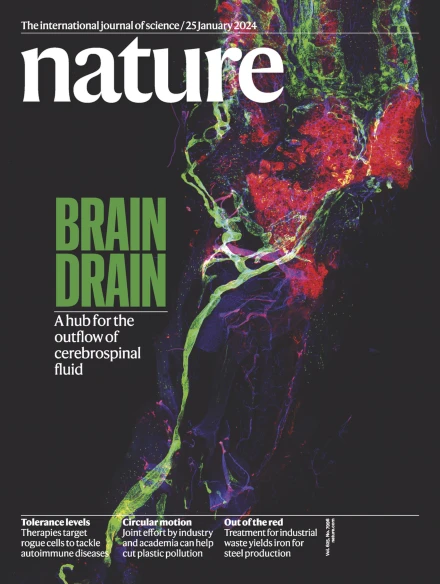Ultra-broadband optical amplification using nonlinear integrated waveguides
IF 50.5
1区 综合性期刊
Q1 MULTIDISCIPLINARY SCIENCES
引用次数: 0
Abstract
Four-wave mixing is a nonlinear optical phenomenon that can be used for wideband low-noise optical amplification and wavelength conversion. It has been extensively investigated for applications in communications1, computing2, metrology3, imaging4 and quantum optics5. With its advantages of small footprint, large nonlinearity and dispersion-engineering capability, optical integrated waveguides are excellent candidates for realizing high-gain and large-bandwidth four-wave mixing for which anomalous dispersion is a key condition. Various waveguides based on, for example, silicon, aluminium gallium arsenide and nonlinear glass have been studied6–10, but suffer from considerable gain and bandwidth reductions, as conventional design approaches for anomalous dispersion result in multi-mode operation. We present a methodology for fabricating nonlinear waveguides with simultaneous single-mode operation and anomalous dispersion for ultra-broadband operation and high-efficiency four-wave mixing. Although we implemented this in silicon nitride waveguides, the design approach can be used with other platforms as well. By using higher-order dispersion, we achieved unprecedented amplification bandwidths of more than 300 nm in these ultra-low-loss integrated waveguides. Penalty-free all-optical wavelength conversion of 100 Gbit s−1 data in a single optical channel of over 200 nm was realized. These single-mode dispersion-engineered nonlinear waveguides could become practical building blocks in various nonlinear photonics applications. An integrated optical parametric amplifier with an ultra-wide bandwidth was implemented using geometrically optimized low-loss nonlinear rib silicon nitride waveguides including the demonstration of broadband all-optical wavelength conversion.


采用非线性集成波导的超宽带光放大
四波混频是一种非线性光学现象,可用于宽带低噪声光放大和波长转换。它在通信、计算、计量、成像和量子光学方面的应用已经得到了广泛的研究。光集成波导具有占地面积小、非线性大、色散工程能力强等优点,是实现高增益、大带宽四波混频的理想选择,而异常色散是实现四波混频的关键条件。各种基于硅,砷化铝镓和非线性玻璃的波导已经被研究了6,7,8,9,10,但是由于常规的设计方法导致异常色散导致多模式操作,因此遭受了相当大的增益和带宽降低。本文提出了一种同时具有单模工作和异常色散的非线性波导的制作方法,用于超宽带工作和高效四波混频。虽然我们在氮化硅波导中实现了这一点,但该设计方法也可以用于其他平台。通过使用高阶色散,我们在这些超低损耗集成波导中实现了前所未有的300nm以上的放大带宽。实现了100 Gbit / s−1数据在200 nm以上单光通道内的无罚全光波长转换。这些单模色散设计的非线性波导可以成为各种非线性光子学应用的实用基石。
本文章由计算机程序翻译,如有差异,请以英文原文为准。
求助全文
约1分钟内获得全文
求助全文
来源期刊

Nature
综合性期刊-综合性期刊
CiteScore
90.00
自引率
1.20%
发文量
3652
审稿时长
3 months
期刊介绍:
Nature is a prestigious international journal that publishes peer-reviewed research in various scientific and technological fields. The selection of articles is based on criteria such as originality, importance, interdisciplinary relevance, timeliness, accessibility, elegance, and surprising conclusions. In addition to showcasing significant scientific advances, Nature delivers rapid, authoritative, insightful news, and interpretation of current and upcoming trends impacting science, scientists, and the broader public. The journal serves a dual purpose: firstly, to promptly share noteworthy scientific advances and foster discussions among scientists, and secondly, to ensure the swift dissemination of scientific results globally, emphasizing their significance for knowledge, culture, and daily life.
 求助内容:
求助内容: 应助结果提醒方式:
应助结果提醒方式:


